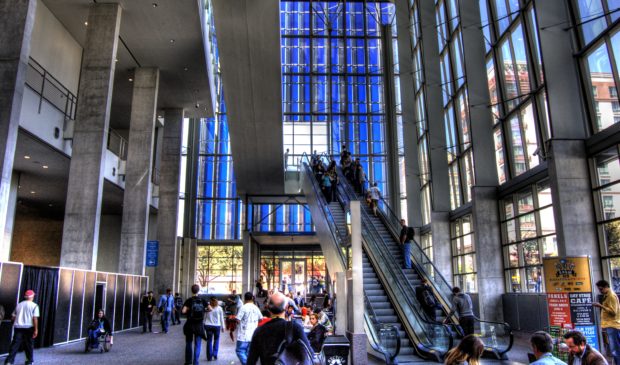Hotel business – and HOT revenue – would accelerate with convention center expansion
Wednesday, January 11, 2017 by
Chad Swiatecki The biggest number looming over the Visitor Impact Task Force is fairly easy to grasp: The city’s Hotel Occupancy Tax generated more than $90 million in revenue in 2016, with double-digit growth expected well into the future.
It’s the many other numbers and percentages – and how those figures are parsed and allocated – that are proving to be the most demanding work in front of the 20-member group for the next three months. The task force has an April 1 deadline to produce recommendations for City Council’s next cycle of budget work sessions about how to best use that money for tourism-related efforts, as required by city and state statutes.
Much of the task force’s first work session last week, a nearly three-hour meeting, was spent bringing members up to speed on exactly how the hotel tax money is collected, where it gets routed and how it can legally be spent for uses such as debt relief on the Austin Convention Center’s most recent expansion, promotion of tourism and convention activities and support of local arts.
Currently, visitors to Austin hotels pay a 15 percent tax on their bills, with 6 percent going to the state and 9 percent remaining with the city.
Taking the city’s 9 percent portion as a whole: 22 percent of it goes toward debt relief on the convention center, another 50 percent goes toward general convention center operations, 16 percent funds the Austin Convention and Visitors Bureau and 12 percent is directed toward arts and cultural efforts.
The state’s caps on how HOT money can be allocated – such as a limit of 15 percent of funding not dedicated debt relief allowed for the arts – would seem to prevent any radical redistribution. But Assistant City Attorney Leela Fireside told task force members that state legislators can work exemptions to certain limits into bills that would allow more flexibility.
“We can maybe bracket legislation to let us use funds in a certain way,” Fireside said. “City Council wants you to look big picture, to be creative and not be bound by this thing.”
The possibility of more flexibility in how to spend a fund that’s likely to grow to more than $100 million this year could create big stakes for all involved.
That reality was addressed by task force member Bill Worsham, who gave his initial thoughts on the group at a recent meeting of the Austin Public Safety Commission.
“Everyone on the task force represents someone being funded,” said Worsham, who was appointed to represent the public safety perspective.
“My impression of it is this is going to be a lot of people defending turf and trying to divide up the spoils of the hotel tax, which is a rapidly increasing funding source. At the end of the day, lots of people who get money from this funding source will want to keep getting it, and want to get more of it,” he said.
That dynamic was in play at the task force’s Jan. 3 meeting, which included a lengthy presentation about the current state of the convention center by its Assistant Director Carla Steffen, with input from CVB President and CEO Tom Noonan, who serves on the task force.
With a number of proposals under consideration for an ambitious expansion of the convention center, Noonan said most of the expansion scenarios could add several hundred thousand room nights per year of businesses to Austin hotels. That would be a boon to the local hotels that are expected to more than double local capacity to greater than 12,000 rooms by 2019, with the follow-on effect of further accelerating growth of HOT revenue.
Noonan said the limited exhibition, ballroom and meeting space at the convention center – it is currently the 47th-ranked center in the country in terms of size, and last of the 20 markets that are considered comparable to Austin – caused the facility to turn away roughly 700,000 room nights of business combined in 2014 and 2015.
Even one of the more modest of the five expansion scenarios under consideration – which would see the facility add several hundred thousand square feet on its east, west or south sides – would make Austin more competitive for large events, generate more HOT money and further benefit local businesses.
Photo by Joey Parsons made available through a Creative Commons license.
The Austin Monitor’s work is made possible by donations from the community. Though our reporting covers donors from time to time, we are careful to keep business and editorial efforts separate while maintaining transparency. A complete list of donors is available here, and our code of ethics is explained here.
You're a community leader
And we’re honored you look to us for serious, in-depth news. You know a strong community needs local and dedicated watchdog reporting. We’re here for you and that won’t change. Now will you take the powerful next step and support our nonprofit news organization?







